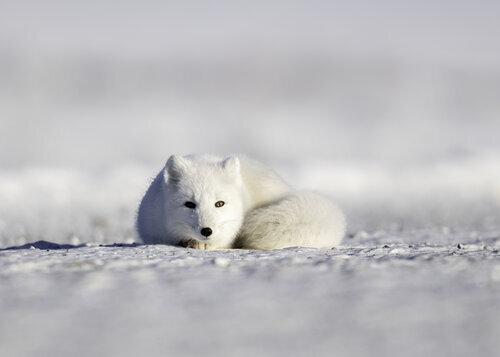Arctic Wildlife at Risk
Polar Bear Cubs
With the loss of sea ice, bears are being forced to come ashore in search of food.The bears have not gained the weight they would have done previously from hunting seals on the ice. As a result, they are often seen starving in search of little to no food.
Humpback Whale
Global warming is killing off their food source and changing their migratory routes. They are more skinny, covered in parasites and exhausted from the increasingly long journeys they are making to reproduce. Rising temperatures trick the whales' biological clocks into thinking it is time to migrate. Less time before migrating means less time searching for food before the long journey.
Arctic Seal
Many seals, including Arctic fur seals and harp seals, depend on this ice for resting, mating, and giving birth to their offspring. Global warming is melting the ice and killing off their food source. A huge consumption of fish and squid by seals occurs when mother seals go hunting so they are able to produce milk for their offspring. When mothers cannot consume enough fish for both her and her pup, there may not be enough milk produced, hindering the survival success of the pup.
Caribou
Climate change is one of the biggest threats facing caribou’s food source today. Scientists believe that climate change may result in heavier snowfall in some regions altering migration patterns and cause caribou to give birth to calves in less protected calving areas. Warming climate is also expected to increase parasites that affects behavior and condition.
Pacific Salmon
The fish that usually define the West Coast are increasingly moving north into the Arctic, raising big questions about how a warming climate is affecting northern ecosystems. Research indicates that warmer temperatures results in reduced salmon growth rates and survival. A reduction in the ice cover on waterways during the winter can have a highly detrimental effect on the welfare of salmon, particularly in the north.
Grizzly Bear
Until two decades ago, grizzly sightings in the High Arctic were so rare that biologists considered any evidence of one a biological anomaly—more likely a bear lost for some unfortunate reason. But no more. Biologists surmise that these grizzlies are following caribou on their annual migration, with rapidly melting sea ice breaking up seals, hibernating, and even interbreeding with polar bears.
Grey Whale
The rapid loss of sea ice appears to be lowering the abundance of gray whales' bottom-dwelling prey on its traditional Arctic feeding grounds in the northern Bering Sea.
Arctic Wolf
Global warming and human hunting are killing off their food source. Arctic wolves are also vulnerable because they reproduce fewer offspring.
Walrus
The biggest threat facing walruses is the loss of stable sea ice. Females will leave their young on the sea ice while they search for food, then haul out to nurse their calves. The accelerating retreat of sea ice puts the newborns’ safe haven farther away from the mothers’ food—meaning longer, more exhausting swims for the mothers, and more time alone for the calves which are then vulnerable to predators.
Arctic Fox
Native to the Arctic regions of the Northern Hemisphere, it is well adapted to living in cold environments due to its thick and warm fur that it also uses as camouflage. Some of the treats facing the Arctic Fox are global warming, the loss of their territory to the red fox, and diseases spread by domestic dogs.
Sei Whale
Inadvertent vessel strikes can injure or kill sei whales. The projected increase in ship traffic arising from the opening of trans-polar shipping routes (as arctic sea ice melts) will increase the risk of vessel strikes as well as ambient noise and pollution.
Beluga Whale
Beluga whales face a number of threats as the climate continues to change. As weather patterns shift and the ice becomes increasingly unstable, the whales risk being trapped in the ice. Like most species in the Arctic, the whales' lives are linked to the sea ice. Less sea ice means less refuge from their predators including the orca.
Bowhead Whale
Today, the greatest threat facing Bowhead Whales is loss of sea ice due to climate change. Bowheads are well adapted to ice-covered waters although they also use open water habitats. However, Bowhead Whales may not be able to adapt to ice free waters because the whales are heat intolerant. They have an extensive blubber layer and an increase in temperature and increased solar radiation may have negative effects on this species.













